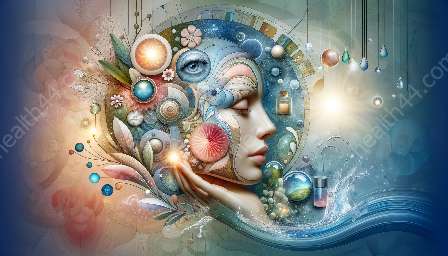When it comes to skin health, understanding the relationship between rosacea and acne is crucial for effective management and treatment. While these two conditions are distinct from each other, they can often coexist and share similar symptoms. In this comprehensive guide, we'll delve into the causes, symptoms, treatments, and how to manage both rosacea and acne for better skin health.
The Basics of Rosacea
Rosacea is a chronic skin condition that primarily affects the face, causing redness and visible blood vessels. In some cases, it can also lead to small, red, pus-filled bumps. It typically develops in adults between the ages of 30 and 50, and while the exact cause is unknown, factors such as genetics, environmental triggers, and vascular abnormalities are believed to play a role in its development.
The symptoms of rosacea can vary from person to person and may include:
- Facial flushing or redness
- Persistent redness in the central part of the face
- Pimple-like bumps or pustules
- Visible blood vessels
- Eye irritation
It's important to note that rosacea can impact a person's self-esteem and emotional health, especially when it affects their facial appearance.
The Link between Rosacea and Acne
While rosacea and acne are separate skin conditions, they can often overlap and share common characteristics. In fact, the appearance of acne-like bumps in rosacea, known as papulopustular rosacea, can lead to confusion between the two conditions. This can make it challenging for both individuals and healthcare providers to accurately diagnose and differentiate between rosacea and acne.
From a treatment perspective, the fact that rosacea can mimic acne underscores the importance of seeking professional dermatological advice to ensure an accurate diagnosis and appropriate management plan.
Understanding Acne
Acne, on the other hand, is a common skin condition characterized by the presence of blackheads, whiteheads, pimples, and cysts. It commonly occurs during puberty due to hormonal changes, but can also affect adults. Factors such as genetics, hormonal changes, and certain medications can contribute to the development of acne.
Common symptoms of acne include:
- Blackheads
- Whiteheads
- Papules (small red bumps)
- Pustules (pimples containing pus)
- Cysts
- Scarring
It's important to note that while both rosacea and acne can cause bumps and pimples on the skin, they have distinct underlying causes and require different treatment approaches.
Similarities and Differences
While rosacea and acne share some common symptoms, it's essential to understand their distinct characteristics and underlying causes. For example:
- Rosacea is primarily characterized by facial redness and visible blood vessels, while acne is characterized by the presence of blackheads, whiteheads, and inflammatory lesions.
- Rosacea may cause eye irritation, a symptom not associated with acne.
- The triggers for rosacea, such as sun exposure, alcohol, and certain foods, differ from those that exacerbate acne.
- The age of onset for rosacea is typically later than that of acne, which commonly begins during puberty.
Understanding these differences is crucial for accurate diagnosis and effective management.
Management and Treatment
Managing both rosacea and acne involves a multifaceted approach that may include lifestyle modifications, skincare regimens, and medical treatments. Here are some general tips for managing both conditions:
- Avoid known triggers for rosacea, such as sun exposure, hot beverages, spicy foods, and alcohol.
- Adopt a gentle skincare routine using non-abrasive products that are suitable for sensitive skin.
- Consult with a dermatologist for personalized treatment options, which may include topical medications, oral antibiotics, laser therapy, or other medical interventions.
- Practice good sun protection by using broad-spectrum sunscreen and seeking shade during peak sun hours.
- Manage stress through relaxation techniques and mindfulness practices, as stress can exacerbate both rosacea and acne.
By addressing both the underlying causes and the visible symptoms, individuals can effectively manage and minimize the impact of rosacea and acne on their skin health.
Conclusion
Understanding the relationship between rosacea and acne is crucial for anyone dealing with these skin conditions. While they share some similarities, their distinct characteristics and underlying causes require tailored management and treatment strategies. Seeking professional guidance from a dermatologist can help individuals navigate the complexities of rosacea and acne, ultimately leading to improved skin health and well-being.


